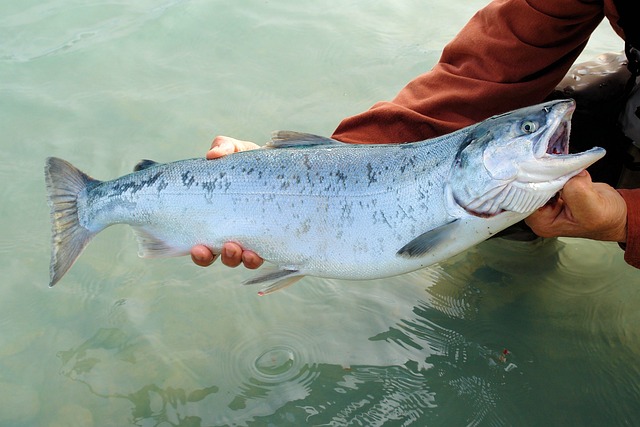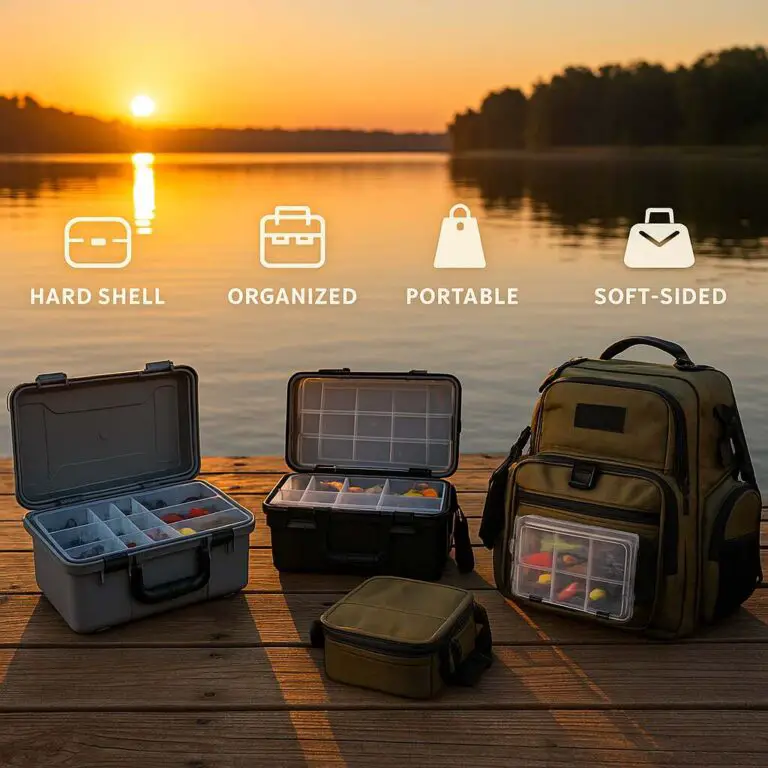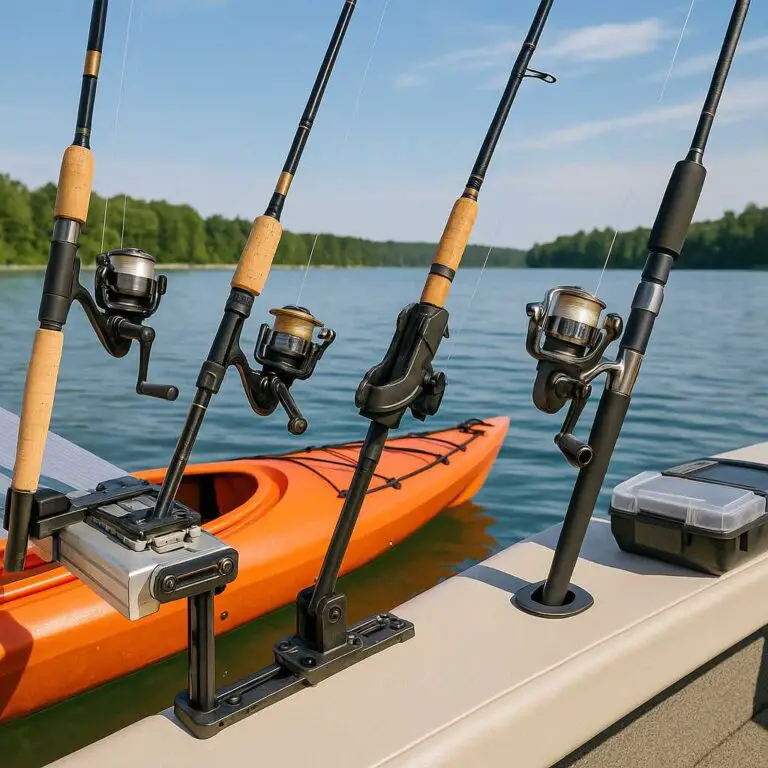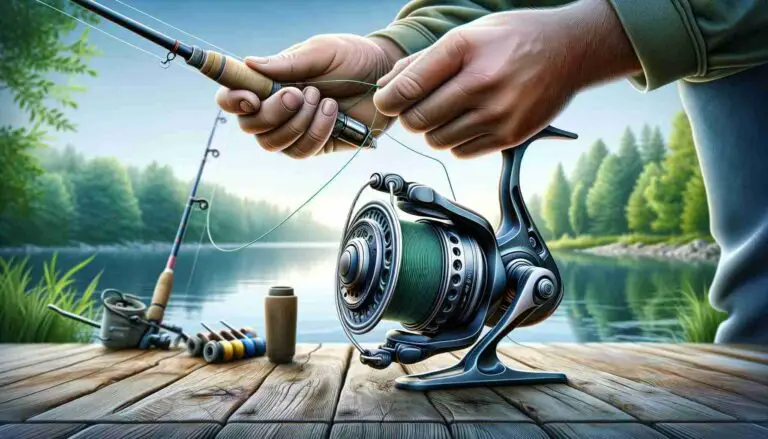Clear water can make for some of the most challenging and rewarding fishing experiences. With crystal clear water, fish can see your bait from a distance, making lure selection an important factor in your fishing success. Choosing the right lure color can mean the difference between a great day on the water and coming home empty-handed. In this article, I’ll discuss the role of color in fishing, factors to consider when selecting the right lure color in clear water, the best colors for clear water fishing, and tips for using lure colors to increase your catch rate.
Whether you’re targeting bass, trout, walleye, pike, or panfish, this guide will help you select the perfect color lure for your next clear-water fishing trip.
Understanding the Role of Color in Fishing
Fish perceive color differently than humans, and understanding how fish see colors can help you choose the right lure color for clear-water fishing. Fish have specialized cells in their eyes called cones that are sensitive to different colors. Unlike humans, who have three types of cones that perceive red, green, and blue, fish have four or more types of cones that allow them to see a wider range of colors, including ultraviolet light.
Fish also use color to identify food and potential threats in their environment. They are attracted to certain colors, such as red and orange, which can mimic the color of wounded or dying prey. Bright colors like chartreuse, pink, and yellow can also be effective in attracting fish in clear water, as they stand out against the natural surroundings.
Different fish species have different visual abilities and preferences when it comes to color. For example, the bass has excellent color vision and can distinguish between shades of colors, while walleye have poor color vision and are more sensitive to contrast and movement. Understanding the visual abilities and preferences of the fish you are targeting can help you choose the best color lure for clear-water fishing.
Factors to Consider when Choosing the Right Lure Color in Clear Water
Several factors come into play when choosing the right lure color in clear water. Understanding these factors can help you make a more informed decision when selecting your lure color. Some of the factors to consider are:
- Water Depth and Clarity. The depth and clarity of the water can have a significant impact on how fish see your lure. In clear water, fish can see the lure from a distance, so it’s important to choose a color that looks natural and blends in with the surrounding environment. In deeper water, darker colors like black, blue, and purple may be more effective as they create a silhouette that mimics prey.
- Sunlight Conditions and Time of Day. Sunlight can affect how fish perceive color. Bright sunlight can wash out some colors, making them less visible, while low-light conditions like dawn and dusk can make certain colors more visible. Matching your lure color to the lighting conditions can increase your chances of success.
- Fish Species and Feeding Habits. Different fish species have different feeding habits and preferences when it comes to luring color. For example, bass may be more attracted to natural colors like green and brown, while trout may prefer brighter colors like orange and yellow. Knowing the feeding habits and preferences of the fish you are targeting can help you choose the best lure color.
- Color Theory and Its Application to Lure Selection. Color theory suggests that certain colors complement or contrast with each other and can create a more attractive lure. For example, complementary colors like red and green can create a more eye-catching lure, while contrasting colors like black and white can create a more visible silhouette.
Best Colors for Clear Water Fishing
Choosing the best color for clear water fishing can be challenging as it depends on several factors. However, there are some colors that are generally more effective in clear water. Some of the best colors for clear-water fishing are:
- Natural Colors. Natural colors like green, brown, and blue are effective in clear water as they blend in with the surrounding environment and mimic the colors of natural prey. These colors can be especially effective when fishing for bass, trout, and other species that are more likely to be found in natural environments.
- Shiny and Reflective Colors. Shiny and reflective colors like silver, gold, and chrome can be effective in clear water as they reflect light and create a more visible lure. These colors can be especially effective when fishing for species that are attracted to movement and flashing, like pike and musky.
- Contrasting Colors. Contrasting colors like black and white can be effective in clear water as they create a more visible silhouette that stands out against the background. These colors can be especially effective when fishing in deeper water or in low-light conditions.
- Fluorescent Colors. Fluorescent colors like chartreuse, pink, and orange can be effective in clear water as they stand out against the natural surroundings and can be seen from a distance. These colors can be especially effective when fishing for species that are attracted to bright colors, like panfish and bass.
Ultimately, the best color for clear-water fishing depends on the specific fishing conditions, the species you are targeting, and their feeding habits. Experimenting with different colors and observing fish behavior can help you determine the best color for your next clear-water fishing trip.
Choosing the Right Lure Color for Specific Fish Species
Choosing the right lure color for specific fish species can be a game-changer when it comes to fishing success. Here are some general guidelines for choosing the right lure color for some common fish species:
- Bass: Bass are opportunistic feeders that are attracted to a variety of colors, but natural colors like green, brown, and blue can be effective in clear water as they blend in with the surrounding environment. Bright colors like chartreuse and pink can also be effective in attracting bass, especially in low-light conditions.
- Trout: Trout are more sensitive to color than many other fish species, and they can be picky about their food. Bright colors like orange and yellow can be effective in attracting trout in clear water, but natural colors like brown and olive are often more effective.
- Walleye: Walleye have poor color vision and are more sensitive to contrast and movement. Bright colors like chartreuse and pink can be effective in attracting walleye in clear water, but dark colors like black and purple can also be effective, especially in deeper water.
- Pike: Pike are aggressive predators that are attracted to movement and flashing, and shiny and reflective colors like silver, gold, and chrome can be effective in clear water. Natural colors like green and brown can also be effective, especially when fishing in weedy areas.
- Panfish: Panfish like bluegill and crappie are attracted to bright colors like chartreuse and pink in clear water. Small jigs or soft plastic baits in these colors can be effective in attracting panfish, especially when fished near cover or structure.
Remember, these are general guidelines, and the best color for specific fish species can vary based on factors like water depth, clarity, and lighting conditions.
Tips for Using Lure Color to Increase Your Catch Rate
Using the right lure color can be a game-changer when it comes to fishing success in clear water. Here are some tips for using lure color to increase your catch rate:
- Experiment with Different Colors and Observe Fish Behavior. Try different colors and pay attention to how the fish react. If they are ignoring one color, try a different color to see if it gets their attention.
- Pay Attention to the Environment and Adjust the Lure Color Accordingly. Water depth, clarity, and lighting conditions can all affect how fish perceive color. Adjust your lure color to match the environment you are fishing in.
- Use Multiple Colors and Patterns on the Same Lure. Using multiple colors and patterns on the same lure can create a more attractive bait and increase your chances of success. Try combining natural colors with bright colors, or using a lure with a contrasting tail or stripe.
- Be Mindful of Fishing Regulations in Your Area. Some areas have regulations regarding the use of certain lure colors or types. Make sure you are familiar with the regulations in your area and follow them accordingly.
- Use Lure Color to Trigger a Reaction Strike. Sometimes, using a lure color that is completely different from the natural environment can trigger a reaction strike. Try using a bright or fluorescent color to stand out and get the fish’s attention.
Conclusion
In conclusion, selecting the right lure color is crucial for success when fishing in clear water. Factors such as water depth and clarity, sunlight conditions and time of day, fish species and feeding habits, and color theory should all be considered when choosing the best lure color for your fishing trip. Natural colors, shiny and reflective colors, contrasting colors, and fluorescent colors are all effective options for clear water fishing.
It’s also important to experiment with different colors and observe fish behavior, adjust lure color to match the environment, use multiple colors and patterns, and be mindful of fishing regulations in your area. By following these tips and selecting the right lure color, you can increase your chances of success and have a more rewarding fishing experience in clear water.








